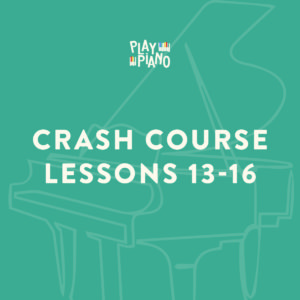Description
If you’ve ever wondered if you’re using the correct fingering, this instructional audio CD course will answer your questions. There is an intrinsic logic to fingering that most pianists don’t know about. It’s simple, yet requires some explanation. You’ll learn how to finger scale passages, chord sequences, chromatic phrases, and so on. But once you understand, you’ll scratch your head and say “Of course! It’s obvious now!”
The Logic of Piano Fingering
- Fingering for music phrases that move up
- Fingering for music phrases that move down
- Fingering for chromatic passages
- Fingering for scales starting on white keys
- Fingering for scales starting on black keys
- Fingering for triads
- Fingering for 4 and 5 note chords
“What fingers should I use?”
    As a piano teacher for many years now, I have had countless students ask me some variation of this question: “What fingers should I use on such and such a note, or such and such a chord?”
    And my answer never fails to surprise them. I tell them “Fingering is not written in stone. Moses did not hand down a commandment on fingering, and neither did Bach or Mozart or Billy Joel or Dave Brubeck”
That comes as a shock to many adults because they think back to their piano lesson days as children and recall their teacher telling them things like “Don’t use your thumb on that key!” and “Cross your 3rd finger over…” and so forth.
So while there are no absolutes when it comes to fingering, there are certainly general principles that pianists have discovered down through the years. So whenever possible, don’t re-invent the wheel. We all learn from experience, but it doesn’t have to be our experience we learn from: we can stand on the shoulders of the giants of the piano that have gone before us, and take advantage of what they have discovered.
Here are some general principles — the intrinsic logic of fingering:
- If you see a passage in your sheet music move higher on the staff, use a low finger (fingers are numbered from the thumb outward, so your thumb is #1, your index finger is #2, your middle finger is #3, your ring finger is #4, and your little finger is #5) so you’ll have fingers available for higher notes. And of course, exactly the opposite if you see a passage move lower on the staff.
- Hold your hand up in front of you. The longest fingers are in the middle — right? Your thumb is far and away the shortest because it starts at a lower point on your hand. Now look at a piano keyboard. The black keys are the furthest away from you — correct? So which fingers can reach the black keys best? You got it — your middle fingers. Therefore, whenever possible play the black keys with your long fingers instead of your thumb. It’s just common sense.
- The corollary to that is obvious: use your thumb and little finger on white keys whenever possible. (And it’s NOT always possible.)
- A scale contains 8 keys. You have 5 fingers. So it’s logical to assume you will have to use some fingers more than once. On right hand scale passages ascending beginning on white keys, start on your thumb and then cross your thumb under your 3rd finger except when the 4th note of the scale is a black key. In that case, to avoid playing the black key with your thumb, cross your thumb under your 4th finger. (And just the reverse with your left hand, of course). On scale passages beginning on black keys, start on a long finger — preferably your index finger (also called your “pointer finger”) and then cross your thumb under whenever the next white key occurs.
- On chromatic passages, the best way I have found is to use just fingers #1 and #3 except where two white keys in a row occur — then use fingers #1 and #2.
- Fingering on chords is largely dictated by the size of the chord; obviously if you are playing a 5-note chord, you will use all 5 fingers. Otherwise just follow the intrinsic logic in the general principles listed above.
P.S. If you still find it hard to believe that fingering is not written in stone, then watch any video of Art Tatum (available on YouTube.com), one of the great jazz pianists, who stunned classical musicians with his blazing speed while using extremely unorthodox fingering…
This course contains 1 Audio CD (no DVD)








Reviews
There are no reviews yet.